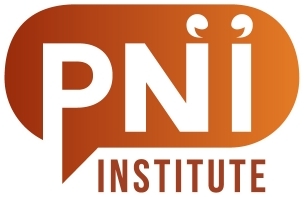 Yes, our next hangout is going to be a lot of fun. We’re going to talk about fun in participatory narrative inquiry. What makes a PNI project fun – for its participants, for the people running it, for the whole community or organization? How can we as practitioners make PNI fun for everyone? Are there any types of fun that might be more important than others? And what is the place of fun in PNI, especially when the topic is serious? Come and talk about it with us.
Yes, our next hangout is going to be a lot of fun. We’re going to talk about fun in participatory narrative inquiry. What makes a PNI project fun – for its participants, for the people running it, for the whole community or organization? How can we as practitioners make PNI fun for everyone? Are there any types of fun that might be more important than others? And what is the place of fun in PNI, especially when the topic is serious? Come and talk about it with us.
The call will be at:
- Date Friday February 12
- Time California 7 00 New York 10 00 London 15 00 Amsterdam 16 00 South Africa 17 00 Melbourne 02 00 (Saturday)
- Place PNI Hangout on Google
Last time: PNI in story work
Now to a recap of our last hangout, in which we delved further into the topic of PNI as it relates to other story work.
On the previous call, we talked about how getting people interested in listening to stories is like “selling broccoli in a candy store,” and how story-world candy comes in many flavors – television and movies, telling stories for persuasion, extracting stories for proof. Selling the broccoli of participatory story listening is hard work.
This time we had some new people on the call, so we again verified that this is hard for all of us. We talked about how we deal with that. Some of us grunt and soldier on (that’d be me), while some of us attempt to draw people in with candy, then convince them to try the broccoli once they are happily munching on their sweet things. In other words, selling candy can help you sell broccoli. I guess I have to admit that even we grunters end up selling a little bit of candy.
Here’s an aside, which is just me talking: I wrote up this table for my blog, but I never finished the post, and it fits better here. As I see it, there are five areas in which people work with stories: persuasion, proof, learning, sensemaking, and transformation. Some of these areas are much easier than others to sell to potential clients, for reasons shown in the table.
|
Area |
Purpose |
Examples |
Participation requirement for organization or community members |
Difficulty getting started for new practitioners |
Comfort level for those in charge (typically) |
|---|---|---|---|---|---|
|
A. Telling stories for persuasion |
Convince people to buy or do something |
Marketing, public relations, communications, advocacy |
Very low |
Low |
Very high |
|
B. Extracting stories for proof |
Find things out, answer questions |
Narrative inquiry, qualitative research, story-based market research |
Low |
Low |
High |
|
C. Sharing stories for connection and learning |
Live and work better together |
Knowledge management, communities of practice, oral history |
Medium |
Medium |
Medium |
|
D. Exploring stories for sensemaking |
Think through things, generate new ideas |
Scenario planning, decision support, brainstorming, strategy development |
High |
High |
Low |
|
E. Using stories for transformation |
Create change |
Narrative therapy, participatory theatre |
Very high |
Very high |
Very low |
As story workers, we can’t change the ease of selling projects. Probably people in any field could make a table like this, where the simpler, faster, easier things sell better. The only thing we can choose is where we will put our energy. Some of us are at the top and are happy to stay there. Others struggle to move down the table, but are held back by what clients like best. Others stay at the bottom and struggle to keep going, but are happy because they don’t have to compromise.
Where is PNI on this table? Why haven’t I mentioned it in any row? Because a PNI project can incorporate elements from any row of the table. PNI requires story listening and participation. People have to be asked about their experiences. They can’t just be told stories. And people have to have some greater opportunity to participate than having their stories extracted from them, even if it’s just being asked to reflect on their stories with some useful questions (useful to the participants as well as the project). With that boundary for PNI, the only possible row combinations in this table that can’t be PNI are A-only projects. Every other row, and every other combination of rows, can make up a PNI project. (And I’ll bet people who do A-only projects do some story listening too, so there may be no exclusions at all.)
(End of aside, back to the hangout)
Next we talked about how there is a degree of isolation among people doing story work, how people don’t talk as much as they could. I was concerned about how much I learned while reading David Hutchens’ book (Circle of the 9 Muses). I said, “I should not be learning about the methods of other story workers in a popular book. I should be hearing about these things from the people themselves.” Everybody else agreed that the state of affairs is not ideal.
We talked about ways people have connected in the past. The Golden Fleece conferences were great (so I hear; I wasn’t able to go to them). Madeleine Blair’s Worldwide Story Work Ning was up and running for years (and I participated in a few of its calls), but from what I hear the newer Facebook group is not very active. (Does anybody want to contradict that?)
We talked about how it’s time for a new gathering of story folks. We talked about how some people want to connect more but are busy, and how some people aren’t interested in more connection. We talked about how there are some legitimate (and some illegitimate) feelings of competition for resources and mind share. We talked about how there are some differences of opinion. We talked about how a new story conference – for everyone working with stories in any row (or rows) of the table above – would be positive for everyone involved in story work. We talked about how an online conference, or even just an online space, might be a good start to a community relaunch.
So let’s see what happens. If anyone is working on new ways for story workers to get together, let me know. I would be happy to be part of it. I believe that several of the people involved with the PNI Institute would be interested as well.

